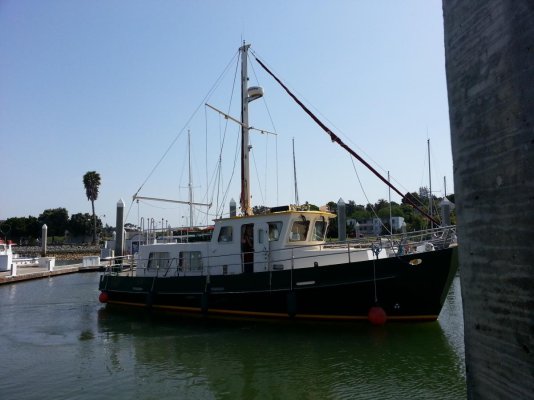Single screw, no thrusters, not a double ender or sailboat hull shape.
Simple maneuver is to get reasonably close to the dock (not as close as necessary usually needed to get a midship spring on a cleat with no dock help)...... kick the stern towards the dock near a cleat/piling and put in neutral, walk back, drop the stern line with about 5 feet of slack (shorter if docking in a really tight place) on the cleat or piling, walk back to the helm making sure the wheel is nearly straight unless a little wheel towards dock is better. and bump into gear. Throttle as necessary.
I towed hundreds of boats to a dock by myself, no dock hands or people on the towed vessel with a single screw, tiny rudder, thrusterless tow vessel. This method works like a charm in all but the most severe conditions. Only then, an after bow would work better if the wind or current was ferocious and keeping the boat off the dock (drifting away quickly in seconds) and T-boning the dock was the only way to get there....then using that bow after spring to swing her in.

